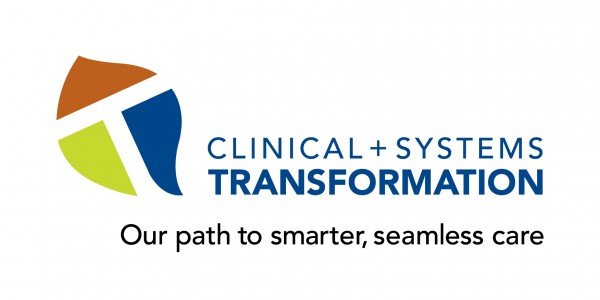Integrating systems for CST success
Dr. Eric Grafstein says data drives everything he does in healthcare.
“We need the information at our fingertips,” says Dr. Grafstein, Regional Emergency Department Head for VCH. “We have a tremendous reliance on information from both inpatient units and the community in order to know what’s going on with the patient.”
Dr. Grafstein is also the physician lead for the Clinical & Systems Transformation (CST) project’s Emergency Team. He got involved because he is passionate about improving access to data and the CST project will help accomplish this.
CST will integrate more than 300 different systems currently in use across VCH, PHSA and PHC, ensuring important data is readily available to our staff. Because not one system is used for everything, multiple standalone systems need to be integrated. The data will be synthesized in the new clinical information system. This will be completed before each site goes live.
It’s about bringing everything together in a single repository, says Dr. Grafstein. So, even if data remains in a different system, it won’t look like it.
“Integration of multiple systems reduces duplicate data entry,” says Serge Music, CST Technical Transformation Project Manager. “It potentially introduces errors if users have to enter patient’s identifiers into systems that aren’t talking to each other.”
Without integration, important information – such as allergy interactions, what drugs have been dispensed and what labs have been done – wouldn’t be shared between systems.
“It’s really critical for our clinicians to have this in order to do their work properly,” says Serge. He adds interfaces are being designed as connection points between an existing system and the new clinical information system. They bridge the gap between two systems that weren’t designed to work together.
Dr. Grafstein says it will make things a lot easier. The new system will allow him to instantly bring up patient information – like electrocardiogram (ECG) or blood count results – instead of asking someone to look it up for him in various systems like Muse, PathNet or Excelleris.
He adds these benefits are major steps on the road to transforming our healthcare system to be smarter.
“This project will improve patient care, the efficiency of care and patient safety – and it’s rare to have the opportunity to do all three.”
Background information
• CST is a joint initiative of VCH, PHSA and PHC, and one of the largest and most complex healthcare projects in Canada. It spans across several areas of the continuum of care, including: acute care inpatient and outpatient units and ambulatory care. As well as creating consistent, leading practices, and a shared clinical information system, CST will deliver HIMSS Level 5 functionality.
• Clinical design teams, made up of hundreds of highly-skilled, multi-disciplinary professionals from across the three Health Organizations and Team IBM (experts from IBM Technical Services, Deloitte, Leidos Solution Builders and the University of Pittsburgh Medical Centre), started work on April 7, 2014. These teams are tasked with designing our future workflows, based on leading practices. In doing so, they are defining the requirements for our new clinical information system.
For more information, please contact Donna Stanton, CST Executive Director/Transformation Lead, VCH at donna.stanton@vch.ca.
You’re invited to submit suggestions for future articles. If you have questions or feedback, please email info@CSTproject.ca.


